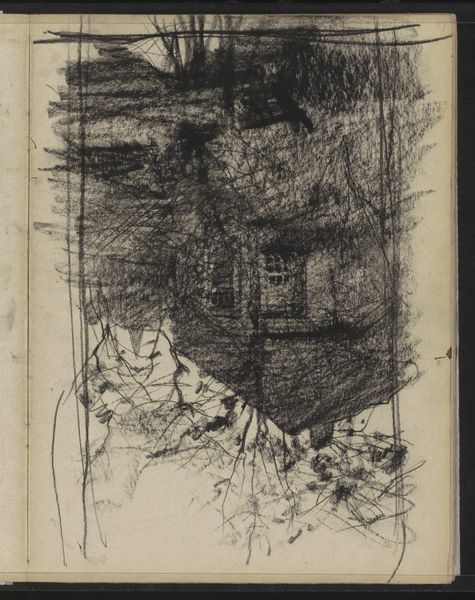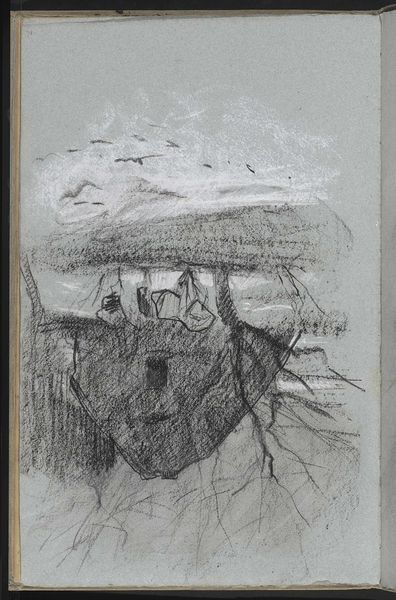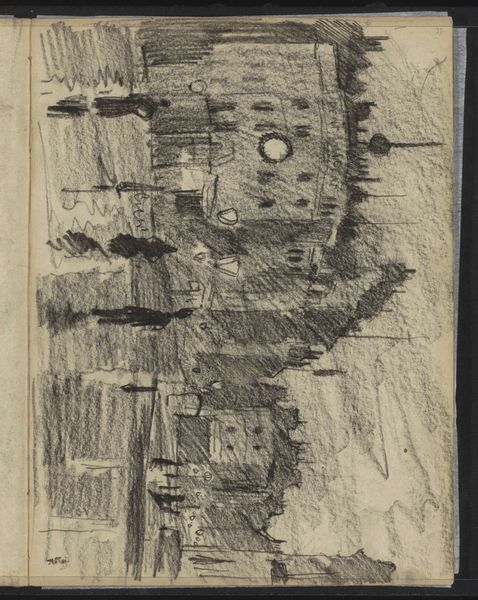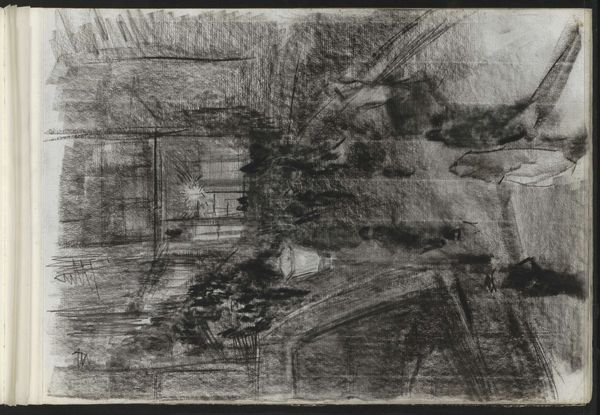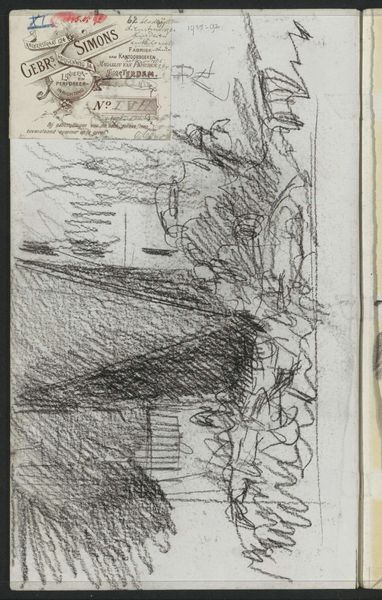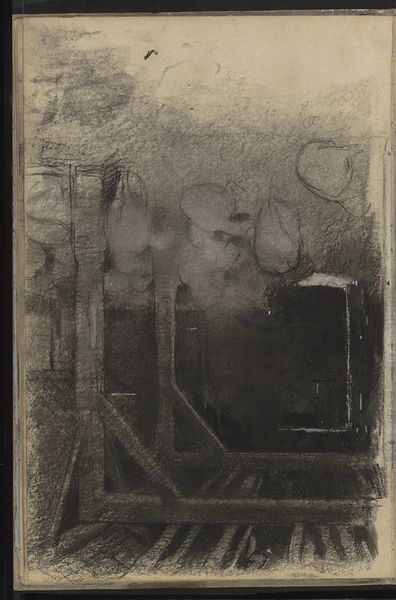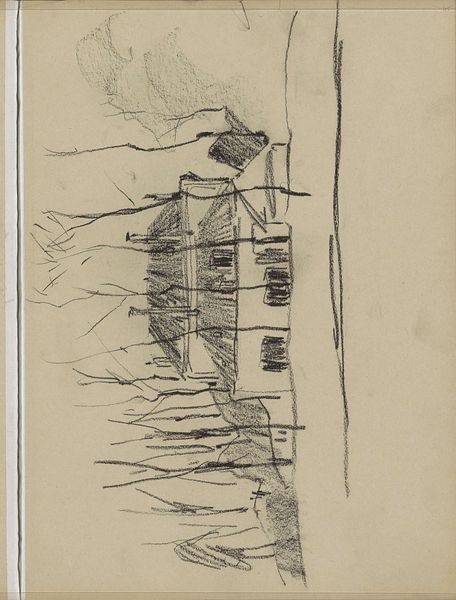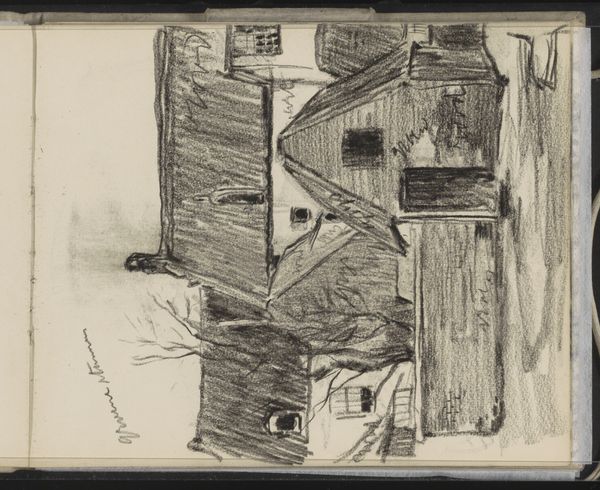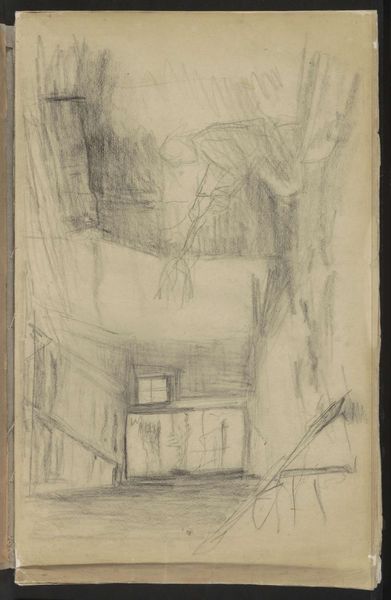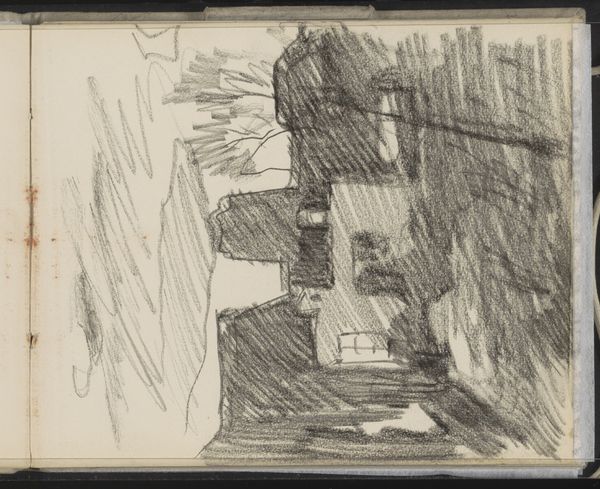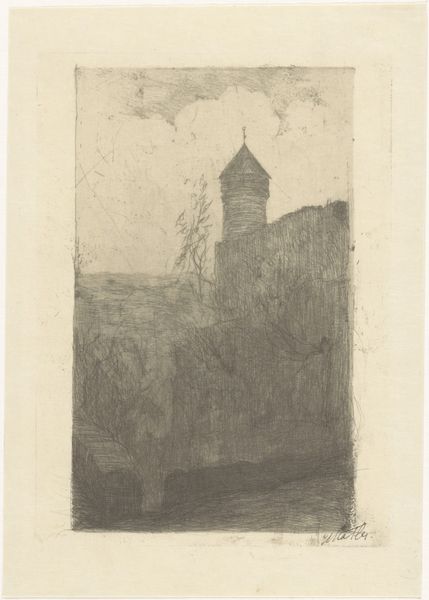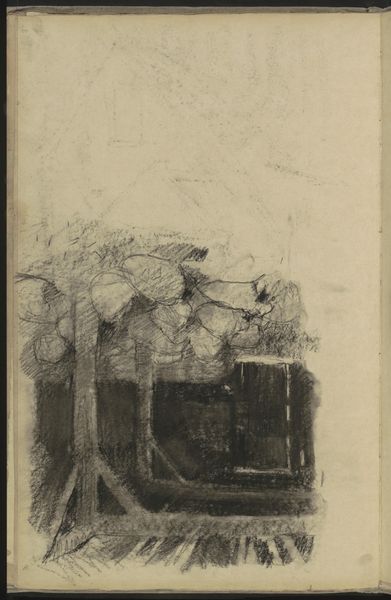
drawing, pencil
#
drawing
#
amateur sketch
#
toned paper
#
impressionism
#
pen sketch
#
pencil sketch
#
sketch book
#
incomplete sketchy
#
landscape
#
personal sketchbook
#
pen-ink sketch
#
pencil
#
sketchbook drawing
#
sketchbook art
Copyright: Rijks Museum: Open Domain
Curator: This drawing, tentatively titled "Stadsgezicht, mogelijk Diepenheim," or "Cityscape, possibly Diepenheim," is attributed to Willem Witsen, around 1887-1888. It's currently held in the Rijksmuseum. What's your first take? Editor: There's a shadowy density that immediately strikes me, almost oppressive. The stark contrast between the heavily worked left side and the relative openness on the right creates a palpable tension. Curator: That contrast might speak to Witsen's own experiences, actually. During this period, he was deeply involved in the Dutch literary movement known as the "Tachtigers," or "Eightiers." These artists challenged the established norms of the time, advocating for radical individualism and art for art's sake. His social circles also grappled with profound anxieties linked to urbanization and industrialization that deeply affected the mental health of artists who engaged with the changing landscapes around them. Editor: So the somber tone reflects broader anxieties of a changing society, not just a stylistic choice? Still, I can't ignore how the sharp, almost frantic lines build form on the right, guiding the eye in a way that provides resolution in looking at something overall not entirely cohesive. It seems intentionally fractured, both structurally and tonally. Curator: Indeed, and Witsen himself certainly felt that fracture. The cityscape he portrays seems to echo this. Notice how the composition favors an incomplete sketchy outlook, leaning towards capturing a fleeting impression of the town. He struggled with depression throughout his life and, despite finding camaraderie among fellow artists, there were frequent doubts about fitting into the artworld, let alone into his traditional family background. Editor: So the technique and its raw emotional impact reflect one another, a potent expression beyond a mere topographical study. What do you suppose the drawing tells us? Curator: Perhaps, in its unfinished quality, Witsen allows us to glimpse the disquiet of rapid modernization, the personal struggle for self-expression within the pressures of expectation. It’s a subtle, almost melancholic meditation on belonging and alienation. Editor: The weight of this shadow definitely shifts in significance when you frame it against societal tensions. There's an active agency when we view that through that lens. Curator: Precisely. This city portrait becomes a space where the personal and political meet, revealing something complex. Editor: Yes. It started out to me as a matter of balancing weight between the composition and is revealed in layers.
Comments
No comments
Be the first to comment and join the conversation on the ultimate creative platform.
